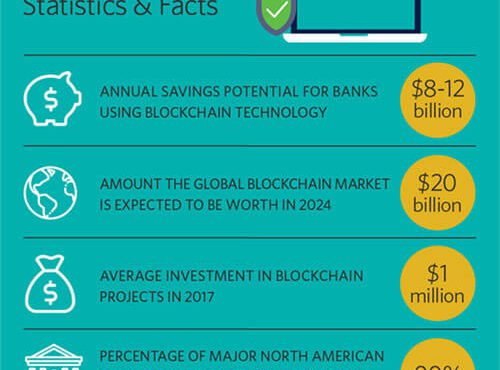5 Things You Need to Know about Blockchain Security
The blockchain was the most talked about topic in the past few months over the internet. Certainly, being a distributed ledger technology and having different security concepts, it was the most hyped and controversial topic in the RSA Conference, San Francisco in 2018.

Enterprises are still skeptical about adopting blockchain as the technology for business because of the security concerns. The idea of implementing blockchain in the enterprise level has been suspended somewhere in between a hype and disappointments, a buzz or realization and it varies from person to person. The result is the same – it is still not a full-fledged technology for many businesses.
After everything, enterprises are really looking forward to taking blockchains seriously. According to a research report, almost 23% of organizations are testing blockchain before implementing it for their business actively. So, why the extensive testing is going on still when it is proven to be a smart technology? The answer is – the security techniques of the blockchain. There are myths and reality about the blockchain security you can find everywhere. Here are 5 things you should know about blockchain security before adopting it wholeheartedly –
1. Security through the blocks and distribution
In a blockchain, the digital blocks that contain information are connected to other blocks that are placed before and after the blocks. Therefore, hackers find it difficult to attack the data contained in the blocks as they are linked to other blocks in sequence. Blockchains are decentralized and the peers involved in the chain are continuously notified and kept in sync about the changes happen in the information. The information in the blockchain cannot be changed using a single computer, thus there is no single point of failure in the blockchains. It requires a huge amount of time, resources and computing to access all the nodes.
2. All the blockchains are not open
Blocks involved in blockchains are open and accessible by everyone – this statement a myth. There are two types of blockchains available – public blockchains and private blockchains and some variations of them. Public blockchains are accessible and available on the internet and the blocks get validated for transactions with the public. Private blockchains are used by known organizations or participants. Partially-private data can flow through the private blockchain and it is good for enterprises. Bitcoin is a very good example of the public blockchain. A blockchain that is used by a university is a good example of the private blockchain.
3. Blockchain network is also secure
Before implementing blockchain, you must analyze the security vulnerability of any system. Blockchain provides security, but any loophole in the architecture, on which blockchain has been implemented, can be a threat to it. Your infrastructure should be able to –
- Prevent all of the users, including the administrators and the root users from using the system.
- Data changing requests or attempts should be denied at the network level.
- Highest standard of security for the encryption keys and transactions are needed.
With these things in your architecture, blockchain will surely be a success in terms of security.
4. Smart Contracts cannot provide legal protection
Smart contracts are the rules made by the provider of the smart transactional system and it is written as a code through a software developer. Therefore, these contracts have a value between these parties or in theory precisely. The law is different and still exists in reality. If you do not refund someone’s money, the contracts or rules incorporated into the blockchain codes cannot give you legal protection anyhow, unless you have a separate legal contract prepared through proper channels. Data security vulnerabilities may leave your business endangered and smart contracts won’t be able to protect you anyway.
5. Third Party systems are not blockchain’s “business”
As the distributed ledger system gets adopted more and more, third-party solutions will become more and more available for this platform. The areas under the blockchain ecosystem where the third party systems can be built are –
- Fintech services
- Blockchain payment services and platforms
- Smart Contract systems
- Payment Wallets
- Integration scopes and platforms
The vulnerabilities in the third-party systems and potential threats through them can make the attackers break the blockchain systems. It will not be a blockchain security issue. The third party systems should be thoroughly verified and validated before integrating into a blockchain platform, as codes are written by the vendors.
The blockchain technology is robust, secure and efficient. But security issues like orphan blocks, weakly secure and weak permissions networks, poor implementation of cryptography, weakly defined and developed smart contracts and transaction tampering through third-party systems are needed to be handled with more maturity. The highly complex blockchain technology and highly computed blockchain development, need more maturity, full-scale testing at the enterprise level and more regulations to make it the most desirable and successful system for businesses.

